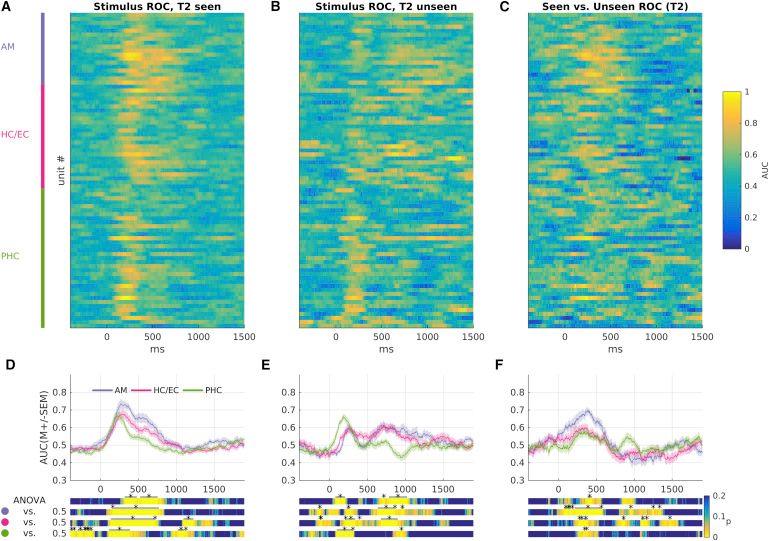How stimuli seep away on the way into consciousness
Separation between conscious and unconscious takes place only at a later stage
Between conscious and unconscious: whether we consciously perceive images that fall on the retina of our eyes, is decided in the brain. A study now shows how certain stimuli "seep away" on their way to consciousness. According to this, this process apparently starts astonishingly late in the course of signal processing. At first, the reaction of nerve cells to unconscious and conscious stimuli is hardly different.

Some of the stimuli simply vanish on the way to consciousness. © Lagereek / thinkstockIn everyday life thousands of visual stimuli are pouring on us. However, only a fraction of it is consciously perceived: in order to escape a stimulus overload, our brain systematically analyzes. In our mental organ, we decide whether or not we are conscious of the images that fall on the retina of our eyes.
How this process is done is, however, largely unknown. Scientists around Thomas Reber from the University of Bonn have now investigated this mechanism more closely - and showed how certain stimuli "seep away" on their way to consciousness.
Perception in the picture test

Not everything we see, is also consciously perceived. © Mikcz / thinkstockFor their study, the researchers used a long-known phenomenon: if people are shown two images in succession, the latter only consciously perceive the second, if the temporal distance to the first is long enough. In the experiment, 21 subjects were presented with a sequence of photos, which varied a little over a tenth of a second.
Previously, Reber and his colleagues had shown them two motives to which they should pay particular attention. In the end they had to say whether they had seen these two motifs in the stream of the other pictures.
We have varied the temporal distance between the two photos we are looking for, explains Reber. They appeared directly after each other on the monitor, sometimes a different photo or even several in between were shown.
Look into the brain
It turned out: If the searched images were shown directly after each other, about half of the participants realized only the first consciously. But what had happened in the brain that had escaped the consciousness of one of the motifs? The scientists were able to investigate this because all subjects in the study were epilepsy patients who had been implanted with special electrodes in the temporal lobes for therapeutic purposes.
The useful side effect:
We were able to measure the response of individual nerve cells to visual stimuli, explains Rebers colleague Florian Mormann. We wanted to find out how the processing of images differs - depending on whether they were perceived consciously or not.

Neuronal Signals in Response to Unseen Stimuli. © 2017 Elsevier Ltd.Late separation
When an image falls on the retina, the optic nerve first directs the associated stimuli to the posterior side of the skull to the so-called visual cortex - the primary visual center. There the signal branches; a part runs through the temporal lobe towards the forehead. The measurements revealed how the electrical pulses change in this way:
In the rear area of the temporal lobes, that is, in the processing chain, there are hardly any differences between consciously and unconsciously processed images, reports Reber.
The splitting in consciously and unconsciously happens only afterwards: On the way into the front parts of the temporal lobe, the pulses in unconscious images take place with an ever greater time delay. In addition, they are getting weaker on their journey.
The separation between consciously and unconsciously takes place much later, as many researchers have so far suspected, says Reber.
Seen but not perceived
This makes it clear: the eye registers the photo and generates a corresponding signal. This seems to "seep away" on the way to consciousness. As a result, the subject does not perceive the picture.
It is amazing, says Reber, with our measurements we can show that the patient has seen a certain motif - even if he negates this fact on demand.
Source: Current Biology, 2017; doi: 10.1016 / j.c.201.201.08.025

Congratulations! This post has been upvoted from the communal account, @minnowsupport, by n3bul4 from the Minnow Support Project. It's a witness project run by aggroed, ausbitbank, teamsteem, theprophet0, someguy123, neoxian, followbtcnews/crimsonclad, and netuoso. The goal is to help Steemit grow by supporting Minnows and creating a social network. Please find us in the Peace, Abundance, and Liberty Network (PALnet) Discord Channel. It's a completely public and open space to all members of the Steemit community who voluntarily choose to be there.
This post has received a 0.21 % upvote from @drotto thanks to: @banjo.
This post has received a 1.97 % upvote from @booster thanks to: @n3bul4.
Resteemed your article. This article was resteemed because you are part of the New Steemians project. You can learn more about it here: https://steemit.com/introduceyourself/@gaman/new-steemians-project-launch